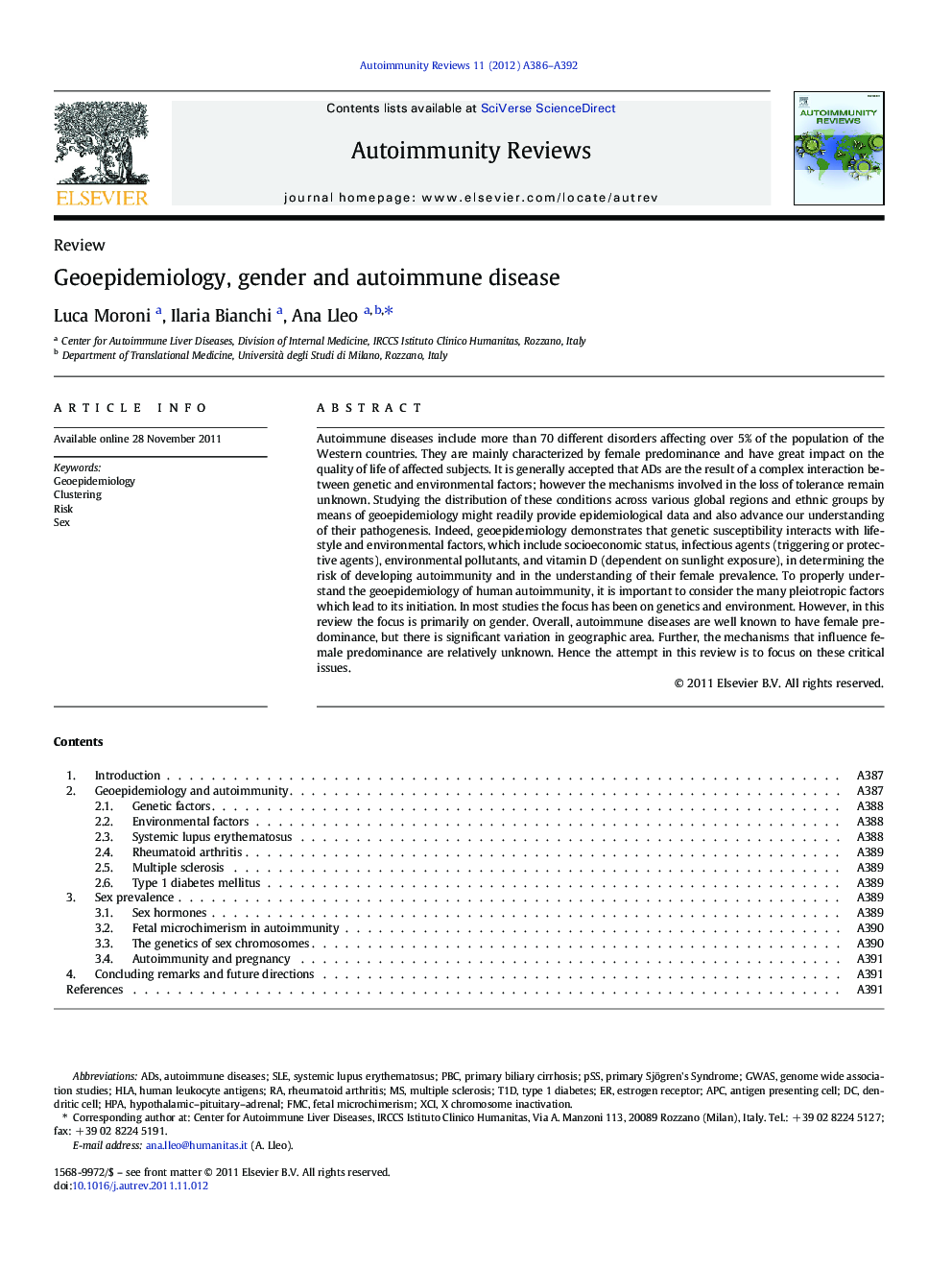| Article ID | Journal | Published Year | Pages | File Type |
|---|---|---|---|---|
| 3341678 | Autoimmunity Reviews | 2012 | 7 Pages |
Autoimmune diseases include more than 70 different disorders affecting over 5% of the population of the Western countries. They are mainly characterized by female predominance and have great impact on the quality of life of affected subjects. It is generally accepted that ADs are the result of a complex interaction between genetic and environmental factors; however the mechanisms involved in the loss of tolerance remain unknown. Studying the distribution of these conditions across various global regions and ethnic groups by means of geoepidemiology might readily provide epidemiological data and also advance our understanding of their pathogenesis. Indeed, geoepidemiology demonstrates that genetic susceptibility interacts with lifestyle and environmental factors, which include socioeconomic status, infectious agents (triggering or protective agents), environmental pollutants, and vitamin D (dependent on sunlight exposure), in determining the risk of developing autoimmunity and in the understanding of their female prevalence. To properly understand the geoepidemiology of human autoimmunity, it is important to consider the many pleiotropic factors which lead to its initiation. In most studies the focus has been on genetics and environment. However, in this review the focus is primarily on gender. Overall, autoimmune diseases are well known to have female predominance, but there is significant variation in geographic area. Further, the mechanisms that influence female predominance are relatively unknown. Hence the attempt in this review is to focus on these critical issues.
